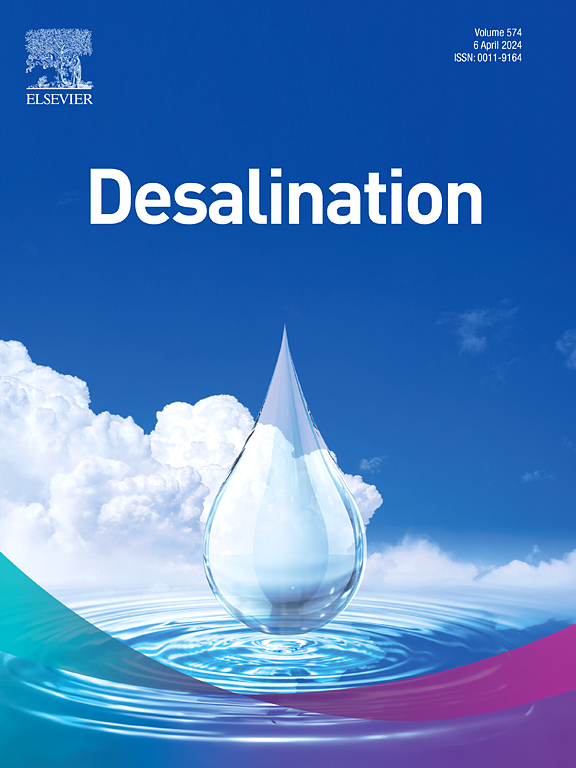Understanding the mechanisms in lithium-ion selectivity enhancement by coating cation exchange membranes with doped polypyrrole
IF 8.3
1区 工程技术
Q1 ENGINEERING, CHEMICAL
引用次数: 0
Abstract
Here we study the effects of three types of dopants—chloride (Cl−), p-toluene sulfonate (TS, ), and dodecyl sulfate (DS, )—on the hydrophobicity of the polypyrrole (PPy) modified cation exchange membranes (CEMs) and their selective transport of Li+. The modified CEMs are referred to as PPyCl-CEM, PPyTS-CEM and PPyDS-CEM, corresponding to the dopants used. Using membrane capacitive deionization (MCDI), we find that the CEMs modifications by PPyDS or PPyTS exhibit enhanced selective transport of Li+ over Ca2+. In addition, the selective transport of Li+ increases with increasing surface hydrophobicity, with PPyDS-CEM exhibiting the highest hydrophobicity and the greatest enhancement in Li+ selectivity —over 60 % improvement in MCDI and a 38-fold increase in the diffusion cell—relative to Ca2+. Combining experimental sorption tests and computational molecular dynamics (MD) simulations, we find that while PPyDS modification results in lower relative Li+ sorption compared with Ca2+, it promotes relative Li+ diffusion, leading to enhanced selective transport of Li+ over Ca2+. The MD simulations further elucidate that both cation dehydration and cation-dopant ion pairing play important roles in the improved relative Li+ diffusion.
求助全文
约1分钟内获得全文
求助全文
来源期刊

Desalination
工程技术-工程:化工
CiteScore
14.60
自引率
20.20%
发文量
619
审稿时长
41 days
期刊介绍:
Desalination is a scholarly journal that focuses on the field of desalination materials, processes, and associated technologies. It encompasses a wide range of disciplines and aims to publish exceptional papers in this area.
The journal invites submissions that explicitly revolve around water desalting and its applications to various sources such as seawater, groundwater, and wastewater. It particularly encourages research on diverse desalination methods including thermal, membrane, sorption, and hybrid processes.
By providing a platform for innovative studies, Desalination aims to advance the understanding and development of desalination technologies, promoting sustainable solutions for water scarcity challenges.
 求助内容:
求助内容: 应助结果提醒方式:
应助结果提醒方式:


